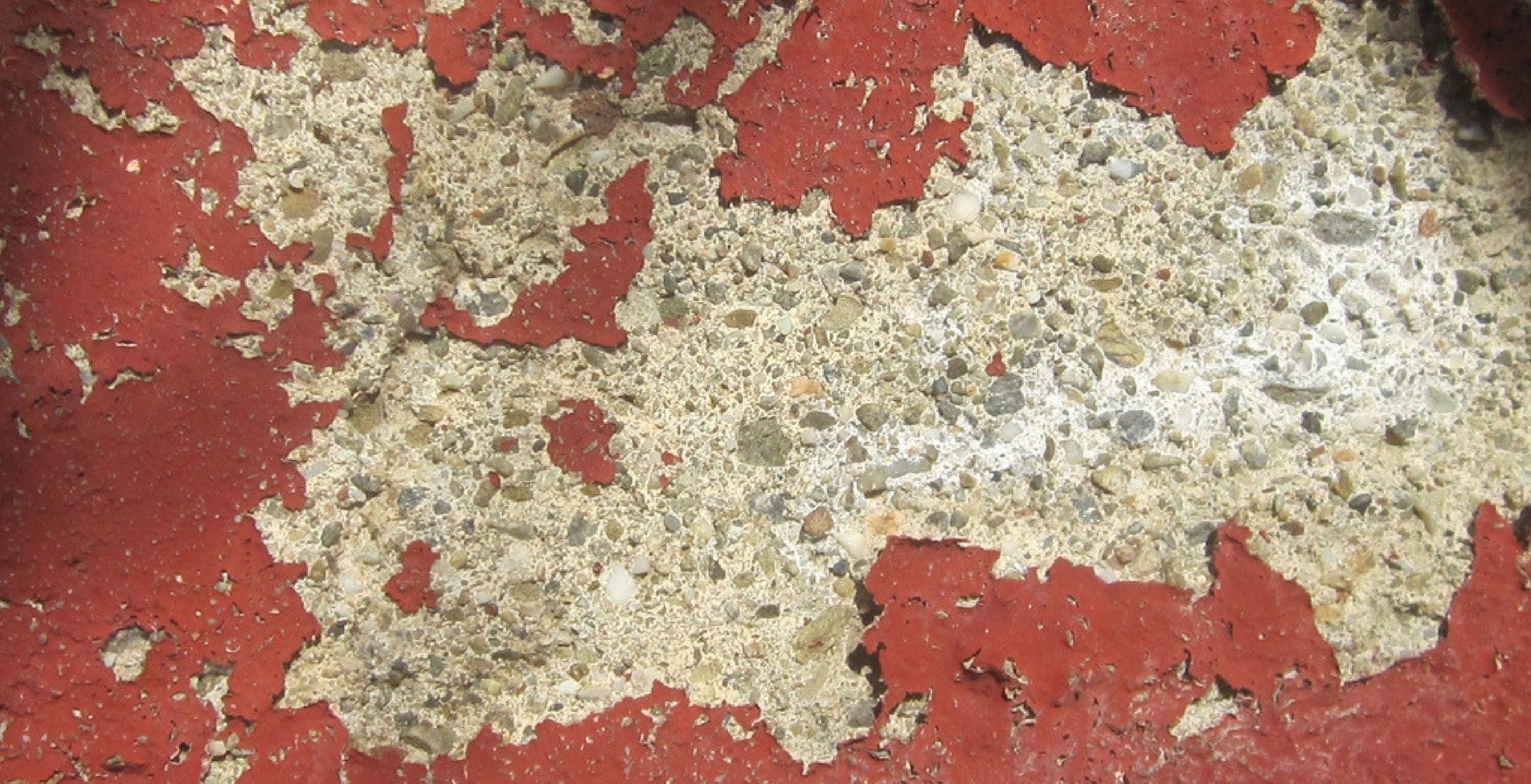7 REASONS WHY EPOXY FLOOR COATING FAILS
Epoxy floors need to be applied on a solid concrete surface it will not bond if it’s applied on:
1- DUSTY/CRUMBLING CONCRETE
If this is the case, you should be able to check for this by looking at the bottom of the peeled paint. If it is covered with a layer of dust/dirt/grit, that is the reason for the failure.
Dust signalizes that the floor wasn’t prepared well enough when the paint was applied to your garage floor.
Weak crumbling concrete floors can be rectified, using a floor primer will consolidate the surface to become suitable for the floor paint to have something to bond to. However, preparing the surface, especially if the surface isn’t sound, is highly recommended before applying epoxy floor primers.
2- DAMP/WET FLOORING
“Water under peeled epoxy indicates a damp concrete surface during epoxy floor paint application or water migrating through the concrete flooring.”Water can’t evaporate through the epoxy; any moisture within the concrete will create hydrostatic pressure. That will eventually cause enough pressure to lift the epoxy floor coating off the surface. Generally, moisture issues need to be rectified before any coating can be applied to the floor.
3- CONTAMINATION OF THE SURFACE
Floor paints may fail due to surface contamination or inadequate surface preparation. Most floor paints will not stick to oil, grease, wax stains and spills or even to previously applied sealers containing these products – a past owner may have these.
Contamination isn’t always what you see at the surface level, it can also occur within the substrate.
Concrete is very porous. If water is spilt onto concrete, 95% will soak into the substrate.
Water will then rise to the surface and evaporate, leaving dry concrete. However, oil will never evaporate. Cleaning the surface of oil will only be a temporary measure as the oil within the substrate will rise and the surface will be dirty again.
Installation of epoxy flooring or floor paint over an oil-contaminated floor will only make the oil rise faster. Acid etching will not remove silicone and tyre polymer residue, these areas will need to be treated through grinding, this is because acid needs to react with the free lime within the concrete for it to work properly. The oil on the surface will have no chemical reaction to the acid and as a result, you will have a poor surface profile, grinding the area and using a solvent-based primer that is specially formulated to adhere to oily surfaces will help to solve the problem.
4- RESIDUE FROM ACID ETCHING OF THE SURFACE
Acid etching of garage floors works by reacting with the free lime in the concrete.
This results in a breakdown of calcium at the surface, exposing the pores of the concrete.
Calcium is then deposited onto the surface forming a fine layer of dust.
It is therefore important that the dust is effectively removed, either through sweeping, vacuuming or pouring liberal amounts of water to flush the surface (be sure to leave the concrete to dry and test the moisture of the surface before applying primer and floor paint).
The dust prevents the floor paint from adhering to the surface by sticking to the dust instead, eventually peeling up.
5- A SEALED CONCRETE FLOOR
Epoxy floor coatings will not adhere to concrete that has been previously sealed. Acid etching of the surface will not remove a sealer.
To make a previously sealed garage floor bond with epoxy coating by grinding the surface.
This removes the sealer and gives you the added benefit of preparation of the concrete.
Testing for a sealed surface only requires water droplets spread around different areas.
Beading of the water droplet indicates a sealed surface whereas water that turns dark and is absorbed into the concrete shows otherwise. To conduct a stronger test (and to avoid inconclusive evidence) use muriatic acid.
If this forms a bead on the surface like a drop of water, the concrete is sealed, otherwise, the acid should react with the concrete by fizzing.
6- EXCESSIVE AMOUNTS OF LAITANCE
The weak top layer of concrete is known as laitance.
This is produced by excess bleed water when trowelling, or through spraying, a method commonly used to smoothen the concrete.
Concrete dust is a clear sign of excess laitance.
To test for laitance isn’t visible in the concrete dust we recommend using a screwdriver to scratch the surface, the screwdriver should glide across the concrete without crumbling or loosening any particles.
Removal of the weakened layer can be achieved through the grinding of the surface, this will ensure that the surface is properly prepared for coating.
7- FINALLY
It is important to know that some garage floor paints from Home Depot will not be as good as high-end professional garage flooring able to withstand high-traffic areas, and eventually become worn from abrasion. Less expensive products are also prone to hot tyre pickups (this is where the heat of the tyre lifts the epoxy coating from the concrete floor) this is not necessarily a sign of poor floor preparation and is likely to be due to the low solids content in the epoxy.
Learn more about concrete coatings.
If you need technical advice contact us.
